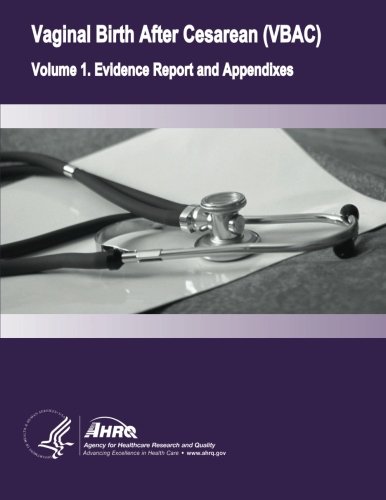
Read Vaginal Birth After Cesarean (VBAC): Volume 1. Evidence Report and Appendixes book online now. You also can download other books, magazine and also comics. Get online Vaginal Birth After Cesarean (VBAC): Volume 1. Evidence Report and Appendixes today. Are you Looking Download or read Vaginal Birth After Cesarean (VBAC): Volume 1. Evidence Report and Appendixes for free..? enjoy it.
This report provides a framework for comparing the harms and benefits of delivery options for women with prior cesarean delivery (CD). The information is designed to help consumers, providers, payers, and policymakers in decision making about repeat cesarean or trial of labor (TOL). In 2000, 22.9 percent of all births in the United States occurred by CD. This rate is the highest total CD rate reported since data collection began in 1989. The vaginal birth after cesarean (VBAC) rate, defined as the proportion of women with a prior CD who delivered vaginally, steadily increased from 1989 to 1996. As allowing TOL became more common, practice variation became a larger concern, e.g., expanding criteria for eligibility and medical induction, and for augmentation of labor. In parallel with this liberalization of criteria and management, highly publicized articles suggested that maternal and fetal risks were perceived to be increasing. Subsequently, the VBAC rate has decreased 27 percent from 1996 to 2000. Currently, a crisis in malpractice rates is decreasing the availability of maternity care providers and raising concerns that patients may have limited options, less access to care, and perhaps be at increased risk for complications. Two types of key questions were addressed. The first group (Questions 1- 7) compares the outcomes of a TOL and an ERCD: 1. What is the frequency of vaginal delivery in women who undergo a TOL (spontaneous onset, induced, and augmented) after prior low transverse cesarean or unknown scar? 2. How accurate are risk assessment tools for identifying patients who will have a vaginal delivery after a TOL? 3. What are the relative harms associated with a TOL (spontaneous onset, induced, and augmented) and repeat cesarean? 4. What is the incidence of uterine rupture, and are there methods for preventing major morbidity and mortality due to uterine rupture? 5. What are the health status and health-related quality of life for VBAC and repeat cesarean patients? 6. Regarding VBAC and repeat cesarean, what factors influence patient satisfaction/dissatisfaction with their childbirth experience? 7. How are economic outcomes related to VBAC, repeat CD, and their respective complications? The second group (Questions 8-10) address factors influencing the decision to have a TOL: 8. What individual factors influence route of delivery? 9. What factors influence a patient’s decision making regarding VBAC or ERCD? 10. How do legislation, policy, guidelines, provider characteristics, insurance type, and access to care affect health outcomes for VBAC candidates?
